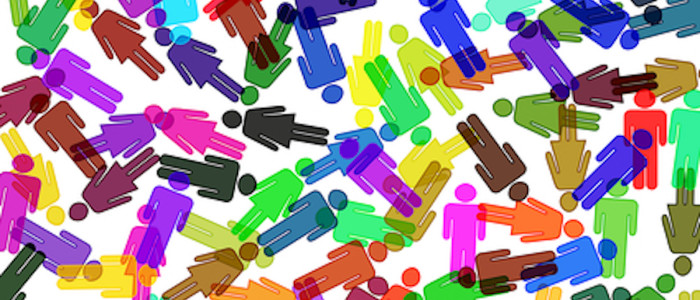What are the Different Genders?
Last week we discussed Gender Fluid, a person whose gender shifts between male, female and other genders. It is a confusing discussion for many reasons but mostly because gender, sexual identity and sexuality are all different – and when discussed together can be quite confusing.
Sex is biological. You are born with genitals that are either male or female (though sometimes a child is born with ambivalent genitalia where the doctors must make a choice for the child at birth, we won’t be discussing this today). Sexuality refers to the sex of people with whom you are attracted. Gender, on the other hand is a bit more complicated. It is how we identify ourselves. It is about the roles and behaviors that society deems appropriate. For example traditional gender roles in the US assume that boys play with trucks and toy guns while girls play with dolls and Easy Bake Ovens.
A person who identifies with their assigned gender at birth, in other words a child born a girl feels and acts like a girl, is said to be cisgendered. People who do not identify with their assigned gender are called many, many other things and it can be quite confusing. To try to make the various labels and identifying monikers a little less confusing here is a list of the different genders. Please note this is not a complete list, there are probably many more labels out there and those who identify as any variety of gender different are making new identifying labels every day. These definitions have been taken from the UC Berkeley Gender Equity Resource Center click here to see the comprehensive list.
Agender – A person who is internally ungendered or does not have a felt sense of gender identity.
Androgynous – A person appearing and/or identifying as neither man nor woman, presenting a gender either mixed or neutral.
Bigender – A person whose gender identity is a combination of man and woman.
Cisgender – A person who by nature or by choice conforms to gender/sex based expectations of society (also referred to as “Gender-straight” or “Gender Normative”).
Gender Diverse – A person who either by nature or by choice does not conform to gender-based expectations of society (e.g. transgender, transsexual, intersex, genderqueer, cross-dresser, etc) preferable to “gender variant” because it does not imply a standard normativity.
Gender Fluid – A person whose gender identification and presentation shifts, whether within or outside of societal, gender-based expectations.
Gender Neutral/ Gender Inclusive – Inclusive language to describe relationships (“spouse” and “partner” instead of “husband/boyfriend” and “wife/girlfriend”), spaces (gender-neutral/inclusive restrooms are for use by all genders), pronouns (“they” and “ze” are gender neutral/inclusive pronouns) among other things.
Gender Non Conforming – A person who doesn’t conform to society’s expectations of gender expression based on the gender binary, expectations of masculinity and femininity, or how they should identify their gender.
Gender Queer – A person whose gender identity is neither man nor woman, is between or beyond genders, or is some combination of genders. This identity is usually related to or in reaction to the social construction of gender, gender stereotypes and the gender binary system. Some genderequeer people identify under the transgender umbrella while others do not.
Non Op – A trans-identified person whose identity does not involve receiving Sexual Reassignment Surgery/Sex Confirmation Surgery.
Pan Gender – A person whose gender identity is comprised of all or many gender expressions.
Transgendered – Those whose psychological self (“gender identity”) differs from the social expectations for the physical sex they were born with. To understand this, one must understand the difference between biological sex, which is one’s body (genitals, chromosomes, ect.), and social gender, which refers to levels of masculinity and femininity. Often, society conflates sex and gender, viewing them as the same thing. But, gender and sex are not the same thing.Transgender people are those whose psychological self (“gender identity”) differs from the social expectations for the physical sex they were born with. For example, a female with a masculine gender identity or who identifies as a man.
Two Spirit – American Indian/First Nations/Native American persons who have attributes of both men and women, have distinct gender and social roles in their tribes, and are often involved with mystical rituals (shamans). Their dress is usually mixture of men’s and women’s articles and they are seen as a separate or third gender. The term “two-spirit” is usually considered to specific to the Zuni tribe. Similar identity labels vary by tribe and include “one-spirit” and “wintke.”


Comments are closed.